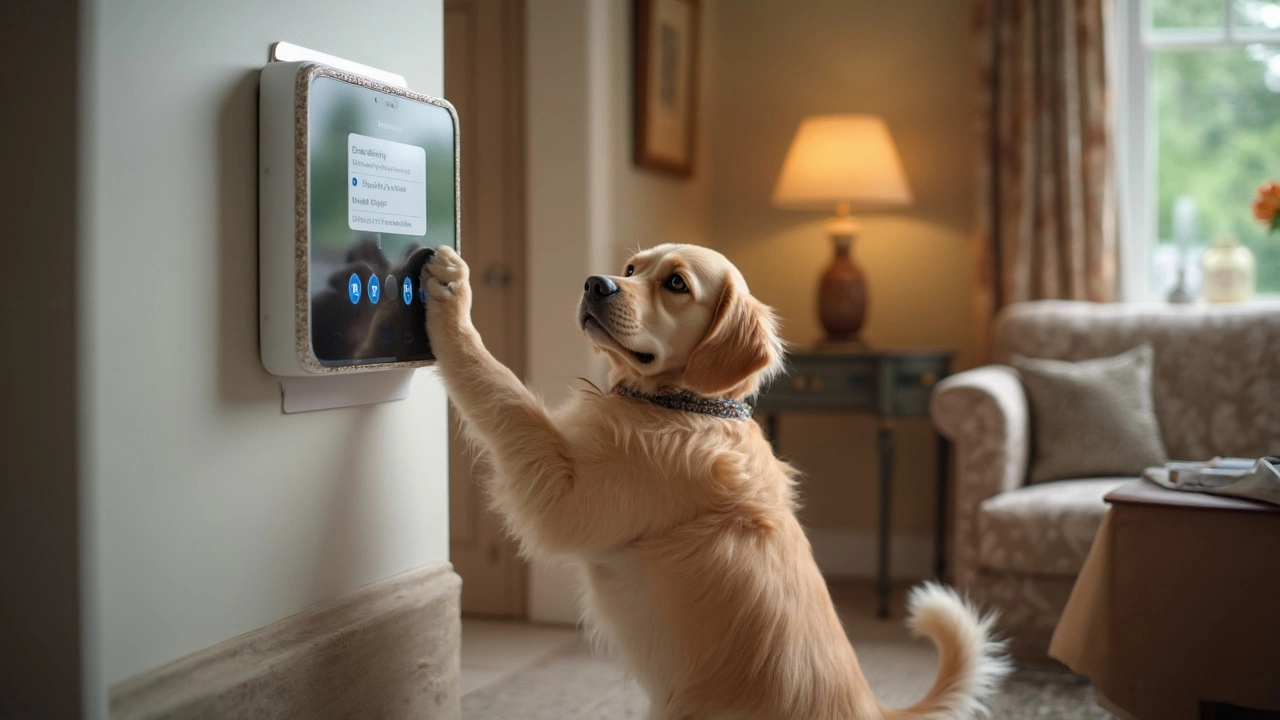If you own a cat, dog, or any critter that roams around the house, you probably worry about two things: keeping the pet safe and keeping the home secure. The good news is you don’t have to sacrifice one for the other. Below you’ll find practical advice on sensors, cameras, and doorbells that work for both you and your pet.
First, let’s talk about motion sensors. Many security systems use motion detectors that can’t tell the difference between a burglar and a bouncing ball. That’s why pets often trigger false alarms. Choose sensors that let you set a pet‑friendly range or height. SimpliSafe, for example, offers models that ignore motion under a certain size, so a cat can sprint across the room without setting off the alarm.
When you shop for a sensor, look for features like pet immunity, adjustable sensitivity, and a built‑in timer. A timer helps because the sensor only stays active for a short period after detecting motion, reducing the chance of repeated alerts from a curious cat. Also, test the sensor after installation – walk around with your pet and see if the system stays quiet.
If you already have a sensor that’s too sensitive, you can add a simple solution: place a small piece of fabric or a pet‑friendly cover over the detector. This blocks tiny movements while still letting larger motions be seen. Just make sure the cover doesn’t block the whole lens, or the sensor will miss real threats.
Security cameras are great for watching over your home, but they can also help you keep an eye on your pets when you’re not there. The trick is to place them where they capture the pet’s activity without violating privacy rules. Avoid pointing cameras directly at bedroom doors or bathrooms – that can get messy fast.
Night vision is another big topic. Many cameras use infrared LEDs that glow invisible to the human eye but show up as bright spots on video. Pets, especially cats, are often drawn to that glow. If you notice your cat playing with the IR light, try a camera that offers “No‑Glow” night vision, which uses a different wavelength that’s less noticeable.
Got a smartphone? You can view live feeds from most cameras right on your phone. Set up the app, link it to your Wi‑Fi, and you’ll be able to check if Fluffy is still sleeping on the couch or if the dog is chewing a shoe. Some apps even let you talk back, so you can calm a nervous pet with your voice.
Don’t forget about doorbell cameras. They’re a common entry point for burglars, but they also give you a glimpse of who’s at the front door – whether it’s a delivery driver or the neighbor’s cat. Choose a video doorbell with a pet mode or adjustable motion zones so the cat’s tail doesn’t set off a notification.
To wrap it up, protecting your pet and your home goes hand‑in hand. Pick sensors that ignore small pets, use cameras wisely, and tweak night vision settings so your cat isn’t chasing invisible lights. With the right setup, you’ll have peace of mind knowing both your security and your furry friends are looked after.
Ready to upgrade? Browse our pet‑related posts for detailed guides on specific devices, from cat‑friendly motion sensors to the best night‑vision cameras for pet owners.

Setting a house alarm with pets can be tricky, as traditional systems often misinterpret your furry friend's movements as potential threats. Learn how to navigate the world of pet-friendly alarms, ensuring both home security and pet comfort. We'll explore motion sensor tips, setting up smart notifications, and choosing the right system for a pet-friendly environment. Protect your home while keeping your pets safe and stress-free.